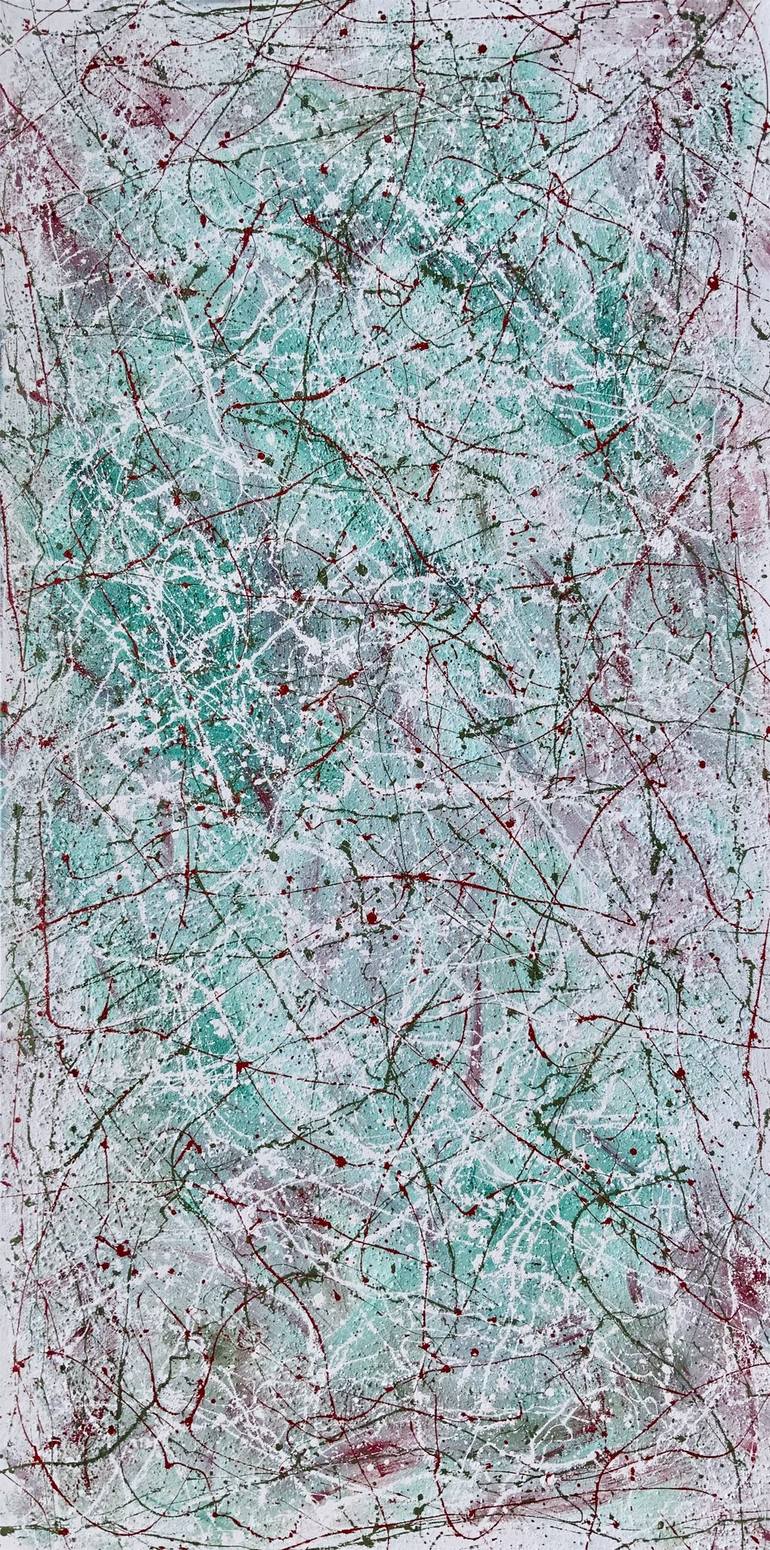







VIEW IN MY ROOM
The Winter War Painting
Painting, Acrylic on Canvas
Size: 36 W x 72 H x 1.5 D in
Ships in a Crate
Shipping included
14-day satisfaction guarantee
Artist Recognition

Artist featured in a collection
About The Artwork
The Winter War also known as First Soviet-Finnish War was a war between the Soviet Union (USSR) and Finland. It began with a Soviet invasion of Finland on 30 November 1939, three months after the outbreak of World War II, and ended three and a half months later with the Moscow Peace Treaty on 13 March 1940. Despite superior military strength, especially in tanks and aircraft, the Soviet Union suffered severe losses and initially made little headway. The League of Nations deemed the attack illegal and expelled the Soviet Union from the organisation. The Soviets made several demands, including that Finland cede substantial border territories in exchange for land elsewhere, claiming security reasons—primarily the protection of Leningrad, 32 km (20 mi) from the Finnish border. When Finland refused, the USSR invaded. Most sources conclude that the Soviet Union had intended to conquer all of Finland, and use the establishment of the puppet Finnish Communist government and the Molotov–Ribbentrop Pact's secret protocols as evidence of this, while other sources argue against the idea of the full Soviet conquest. Finland repelled Soviet attacks for more than two months and inflicted substantial losses on the invaders while temperatures ranged as low as –43 °C (–45.4 °F). The battles focused mainly on Taipale in Karelian Isthmus, on Kollaa in Ladoga Karelia and on the Raate Road in Kainuu, but there were also battles in Salla and Petsamo in Lapland. After the Soviet military reorganized and adopted different tactics, they renewed their offensive in February and overcame Finnish defences. Hostilities ceased in March 1940 with the signing of the Moscow Peace Treaty, in which Finland ceded 8% of its territory to the Soviet Union. Soviet losses were heavy, and the country's international reputation suffered. Their gains exceeded their pre-war demands, and the USSR received substantial territories along Lake Ladoga and further north. Finland retained its sovereignty and enhanced its international reputation. The poor performance of the Red Army both encouraged German leader Adolf Hitler to believe that an attack on the Soviet Union would be successful and confirmed negative Western opinions of the Soviet military. After 15 months of Interim Peace, in June 1941, Nazi Germany commenced Operation Barbarossa, and the Continuation Warbetween Finland and the USSR began. Source: Wikipedia
Details & Dimensions
Painting:Acrylic on Canvas
Original:One-of-a-kind Artwork
Size:36 W x 72 H x 1.5 D in
Frame:Not Framed
Ready to Hang:Not applicable
Packaging:Ships in a Crate
Shipping & Returns
Delivery Time:Typically 5-7 business days for domestic shipments, 10-14 business days for international shipments.
Handling:Ships in a wooden crate for additional protection of heavy or oversized artworks. Crated works are subject to an $80 care and handling fee. Artists are responsible for packaging and adhering to Saatchi Art’s packaging guidelines.
Ships From:United States.
Have additional questions?
Please visit our help section or contact us.
I’m (I am?) a self-taught artist, originally from the north suburbs of Chicago (also known as John Hughes' America). Born in 1984, I started painting in 2017 and began to take it somewhat seriously in 2019. I currently reside in rural Montana and live a secluded life with my three dogs - Pebbles (a.k.a. Jaws, Brandy, Fang), Bam Bam (a.k.a. Scrat, Dinki-Di, Trash Panda, Dug), and Mystique (a.k.a. Lady), and five cats - Burglekutt (a.k.a. Ghostmouse Makah), Vohnkar! (a.k.a. Storm Shadow, Grogu), Falkor (a.k.a. Moro, The Mummy's Kryptonite, Wendigo, BFC), Nibbler (a.k.a. Cobblepot), and Meegosh (a.k.a. Lenny). Part of the preface to the 'Complete Works of Emily Dickinson helps sum me up as a person and an artist: "The verses of Emily Dickinson belong emphatically to what Emerson long since called ‘the Poetry of the Portfolio,’ something produced absolutely without the thought of publication, and solely by way of expression of the writer's own mind. Such verse must inevitably forfeit whatever advantage lies in the discipline of public criticism and the enforced conformity to accepted ways. On the other hand, it may often gain something through the habit of freedom and unconventional utterance of daring thoughts. In the case of the present author, there was no choice in the matter; she must write thus, or not at all. A recluse by temperament and habit, literally spending years without settling her foot beyond the doorstep, and many more years during which her walks were strictly limited to her father's grounds, she habitually concealed her mind, like her person, from all but a few friends; and it was with great difficulty that she was persuaded to print during her lifetime, three or four poems. Yet she wrote verses in great abundance; and though brought curiosity indifferent to all conventional rules, had yet a rigorous literary standard of her own, and often altered a word many times to suit an ear which had its own tenacious fastidiousness." -Thomas Wentworth Higginson "Not bad... you say this is your first lesson?" "Yes, but my father was an *art collector*, so…"
Artist Recognition

Artist featured by Saatchi Art in a collection
Thousands Of Five-Star Reviews
We deliver world-class customer service to all of our art buyers.
Global Selection
Explore an unparalleled artwork selection by artists from around the world.
Satisfaction Guaranteed
Our 14-day satisfaction guarantee allows you to buy with confidence.
Support An Artist With Every Purchase
We pay our artists more on every sale than other galleries.
Need More Help?